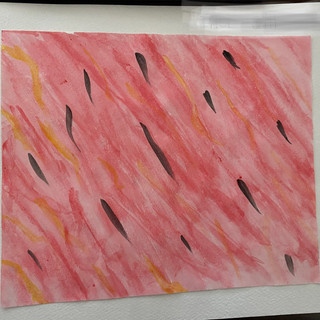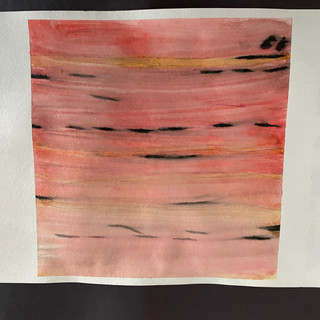Scientific Art
- stephanieerickson7
- Nov 10, 2022
- 3 min read
Updated: Apr 13, 2024
“the greatest scientist are artists as well.” - Albert Einstein
In Honors Anatomy and Physiology class, we are in the Histology/Cytology Storyline. In other words, body tissues and specialized cells. If you have ever taken or taught A&P, you know the coursework can be rather dense and vocabulary laden. I needed to break up the notes, and labs with a fun activity. Inspired by the art of Odra Noel, students choose one body tissue to paint with watercolors.
Students were introduced to Dr. Noel's art through a Google Slide show as we could not access her website through the school network.
Students began by researching tissues and choose a tissue that they were inspired to create artwork of. They could re-create the image or use it for inspiration and take artistic license with their creation. Once they choose the tissue, they needed to create a plan before they could finalize on the watercolor paper.
My friend and colleague Emily Hall, art teacher extraordinaire and owner/creator of Studio Gnome supplemented my Dollar Store bought watercolor paints with wax for masking, an assortment of brushes and some helpful watercolor hints. As a class, we watched a video from Mr. Otter Art Studio with watercolor techniques to enhance our paintings.
The result was phenomenal and allowed the students a break from the droning of vocabulary and notes.
Art and science have always been interrelated. Leonard da Vinci is the most widely known artist and engineer, but he wasn't the only scientist to be gifted in the arts. Rufus Porter the creator of Scientific American magazine was a muralist and portrait artist. Einstein was a violinist and pianist. However, we often teach them (art and science) as polar opposites. We often teach all our subjects as solo disciplines and not the interconnected disciplines they actually are.
Truely, the core of science is creativity. Drawings and scientific models help us visualize and understand in depth scientific concepts. Scientists and artists alike approach problems in the same method, with inquisition and open minds. Astronomers add color to images to identify different elements under different wavelengths. Each wavelength can tell us something different about the object. The images can be used to tell the story of the Universe. The images we obtain from the Hubble, JWST and other telescopes are often black and white. Astronomers use false color to highlight interesting features in the images. Color manipulation is also used in microscopy to identify different elements under polarized light.
So, while science and art in the secondary science class are often taught as their own discipline, art and science have been entwined since the very start. Project based learning is a great conduit for arts integration into the science classroom. The Materials Research Society has been hosting a "Science as Art" challenge twice a year for 8 years now. Scientists showcase images of crystals, bacteria and nanoparticles.
In a 2018 study, University of Waterloo researchers Maria Fernandes, Jeffery Wammes, and Melissa Meade conducted several experiments on the influence of art on memory. Researchers found that drawing increased memory recall by double than solely writing the definition in student notebooks. Most importantly, the effect of drawing was not limited by a student's artistic ability. This is the first excuse I hear from students, "but I am not artistic", "I can't draw". The researcher's stated art is such a powerful memory tool because it “requires elaboration on the meaning of the term and translating the definition to a new form (a picture).” (Fernandes, et al., 2018) So, incorporate more art into your next lesson. Have students include a sketch of the vocabulary word, add in sketchnoting, add students drawing scientific models to EVERY lab. There is truly nothing to lose and everything to gain.
#iteachhighschoolscience #iteachhighschool #honorsanatomyandphyaiology #artintegration #artinscience #scientificart #watercolorhistology #histologyart #scientificmodels #odranoel
References
Caglioti, Guiseppe (2017, April) Art According to Einstein, Lettera Matematica, Vol 5, Issue 5, pages 49-53
Fernandes, M. A., Wammes, J. D., & Meade, M. E. (2018). The Surprisingly Powerful Influence of Drawing on Memory. Current Directions in Psychological Science, 27(5), 302–308. https://doi.org/10.1177/0963721418755385
Masetti, Maggie (2016) The Truth About Hubble, JWST, and False Color | NASA Blueshift
Masetti, Maggie (2009) The Science of Pretty Pictures, NASA Blueshift Podcast
Mitchell, Sara, Maggie (2009) Making data Beautiful, NASA Blueshift Podcast






































Comments